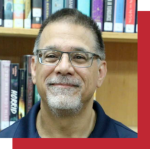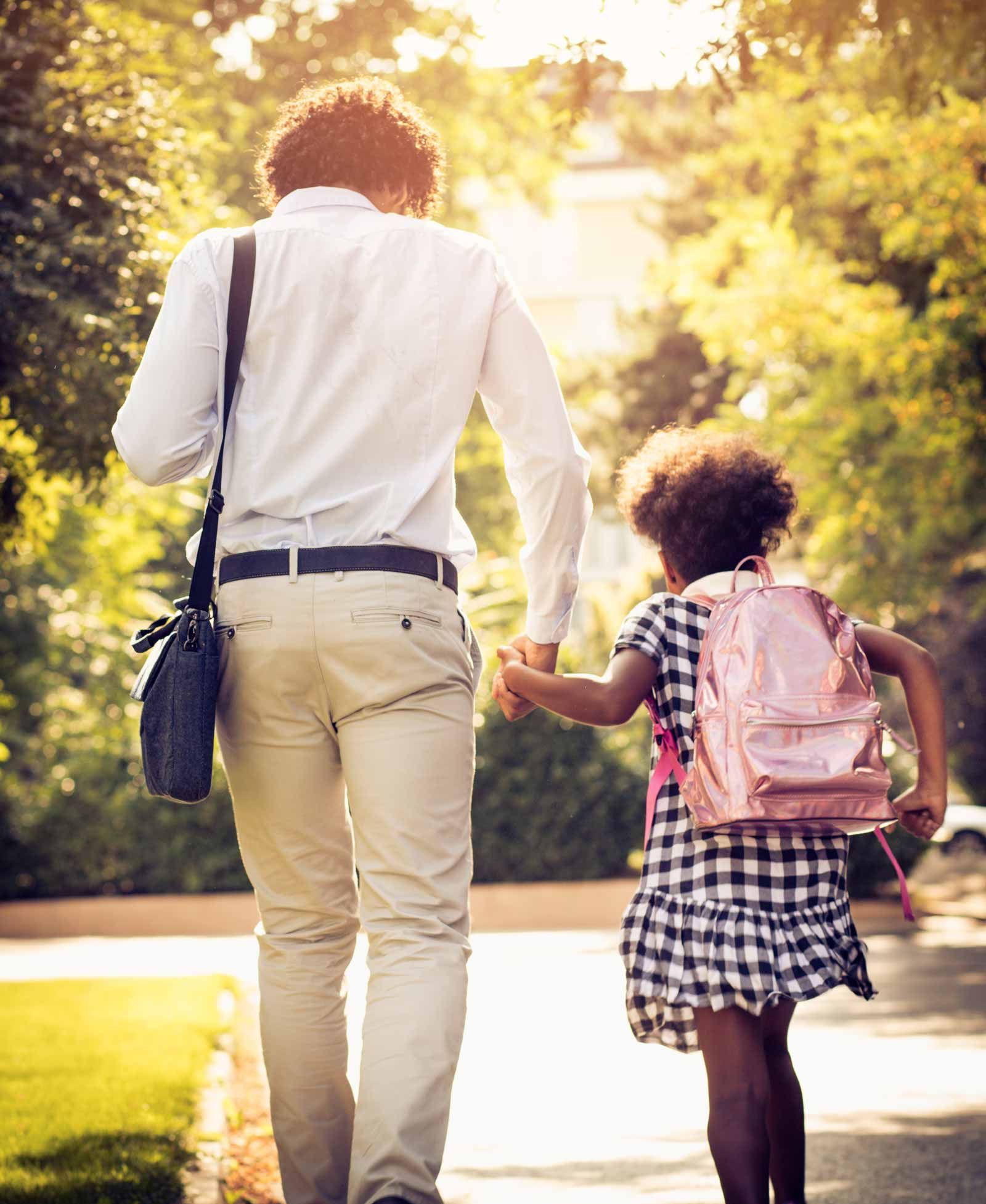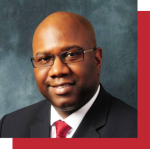

SAFETY
FIRST
Safe Schools For All Task Force Report


Report Summary
School safety is more than being prepared for emergencies. School safety is a day-to-day concern that should be addressed proactively rather than reactively.
Educators, school leaders and policymakers must create a positive school safety climate and culture that supports student needs, guarantees adequate staffing in schools, improves communication among stakeholders and keeps children and staff safe from threats.
Schools should bring together the people in the building who work most closely with students to address these concerns. Together, we can find solutions that restore a sense of safety and well-being for students and staff in our schools.

We can’t just prepare for the worst day. We have to prepare for every day.
Primary Recommendations of This Report
For Educators and Local Union Leaders

Support and Monitor School Safety Initiatives

Establish Union Health and Safety Resources
For State and National Leaders

Prioritize Funding to Hire Critical Staff

Include Staff Representatives on Safety Committees

Support Proven Practices and Community Schools

Issue Uniform School Safety Guidance

Strengthen Gun Safety Regulations
For School Districts

Adopt Prevention Strategies

Reduce Class Size

Train All Staff

Support Staff Mental Health and Well-Being

Hire Dedicated Staff

Improve School Safety Drills

Introduction

The first and greatest responsibility of schools, administrators and educators is to keep their students safe.
Our schools should be sanctuaries for learning. Secure, welcoming school environments are essential for effective teaching and learning, and every school should have what is needed to keep everyone safe and meet students’ needs. Sadly, disruptive and violent episodes are commonplace in classrooms across the country, and New York is no exception, with school safety concerns on the rise. To compound these issues, the threat of mass violence has increased as the scourge of mass shootings continues to infiltrate our schools.
To address this current and escalating crisis of safety in our schools, NYSUT convened a task force of educators — including teachers, school-related professionals (SRPs) and other support staff — charged with building a list of recommendations for how national, state and local leaders can best support safe public schools at the center of every community. The group focused on several key areas most crucial to building safer school environments including:
- Addressing social-emotional needs of students
- Ensuring appropriate staffing levels
- Fostering community partnerships
- Confronting the crisis of mass violence in schools
The task force identified key concerns and made several recommendations for how local, state and national leaders should address these pressing issues.

Task Force Findings
Task force members report that the social-emotional impacts of the COVID-19 pandemic have led to an increase of students acting out, classroom disruptions and violence in our schools. But we can’t ignore that this escalation in student behaviors was prevalent before the pandemic.

"Now that everyone is back at school in person one thing is clear: High schoolers are acting like middle schoolers, middle schoolers are acting like elementary kids, and elementary kids … well, it isn’t pretty. The time for hand wringing is over. Our kids are depending on us."
This increase in classroom disruptions and students acting out is evidence that kids’ needs aren’t being met. Schools must place providing what kids need above everything else. Educators, including the teachers and SRPs who work most closely with students, want and need these serious concerns addressed for the sake of their students. Chronic disruptions have a cumulative impact on the education of all students in the classroom over time — both the students in need and their peers.
Supporting students’ social-emotional needs is the best way to prevent crises in our schools. Relying solely on punitive measures only harms students in the long run and exacerbates the problems we seek to solve. Programs that implement therapeutic services and restorative practices are finding success in schools across the state. But implementing such restorative practices doesn’t mean there are no consequences for inappropriate student behavior; watering down the school code of conduct doesn’t work either. Temporarily removing students from crises, only to return them to the classroom without interventions or support, perpetuates negative behaviors and fosters a culture of mistrust among students, staff, parents and school administrators. Successful programs bring together all the people in the school building to find solutions and make sure there is buy-in by all stakeholders.
In order to address student behaviors and create a healthy learning environment in schools, we must support educators and schools with the resources they need and, most importantly, the time to implement these initiatives. This includes regular and ongoing training in social emotional learning, violence prevention, mental health and proven prevention and intervention strategies. If school staff aren’t trained properly and involved in the development and implementation of these initiatives, they just won’t work.
Success Story
The Positive Learning Collaborative from UFT

The United Federation of Teachers (UFT) and the New York City Department of Education developed the Positive Learning Collaborative (PLC) program which partners with educators and administrators to provide the training, tools and support needed to ensure every school is a nurturing, joyful place to learn and grow.
The model incorporates restorative practices, therapeutic crisis intervention for schools (TCIS) and positive interventions and supports to counteract the impact of punitive school discipline which disproportionately affects students of color.
PLC equips school communities with the skills, knowledge and confidence they need to safely and effectively respond to challenges in their schools, help prevent crises and ultimately help students focus on academic goals. All school stakeholders receive intense training and direct consultation. Teachers and SRPs learn techniques to help prevent minor conflicts from happening and keep those that do from escalating. And additional training and support is brought in to prevent biased-based bullying and promote gender-inclusive schools.
The PLC’s successes speak for themselves. In one case study, school staff reported a 50 percent reduction in suspensions, 32 percent increase in staff’s ability to manage challenging behavior, 33 percent increase in open communication and an 85 percent increase in staff feeling valued.
The Positive Learning Collaborative has been implemented in large and small public schools in 22 communities across all the city's five boroughs.
Learn more at PositiveLearning.org

"We needed to do something different. Everyone is on the same page, their voices are valued, and we share accountability for our success."
Task force members report that staff safety training is done too infrequently and irregularly to be reliable and effective. Rather than engaging school staff with effective training resources, all too often superintendent’s conference days become a day when training is just another “box you check,” says Dan Bishop of the Canaseraga TA.
Task force members report that in some districts, staff hired in the past two years have not received important school safety training at all. In others, a short presentation on the opening day of school is the extent of the staff training for the entire year. And to make it more valuable than just checking a box, staff need an opportunity to absorb and understand the material.
"I have had therapeutic crisis intervention services training only because I’ve asked to be trained. Only our special education teachers and a small handful of elementary and middle school teachers are provided TCIS training in my district."
Most schools do not provide their staff with the mental health training required by state law to support the rising number of students in need. This is a serious concern well documented in a recent report by the state comptroller, which found that 90 percent of districts audited either did not offer mental health training at all or provided training that lacked some or all recommended components. Read more about the Comptroller’s report.
The shortcomings in training come at a time of particularly high needs. Poverty, a lack of access to health and social services, housing and food insecurity, and a lack of reliable transportation and internet services continue to place added stress on students and families. These challenges create barriers to success in school and the workplace. Fully funded community schools and well-designed, community-based wraparound services can provide much-needed support for communities and families in need.
Mental health concerns extend to school staff as well as students. In recent years, school staff have taken on increased responsibilities in their classrooms beyond their primary role to now include teacher, counselor, family advocate, mandated reporter and intervention specialist. These added responsibilities, along with the pressures of teaching during the pandemic, have increased the stress on educators resulting in a high level of educator turnover and burnout.
Schools can’t afford to lose these experienced educators — we need to support the professionals in the classroom in the same way we support students.
Adequate staffing in schools is a universal concern of task force members. School staff are stretched too thinly to fully support everyday safety concerns, to say nothing of the physical injuries and mental health impacts stemming from fights, threats and other forms of disruption. Every school needs school counselors, school psychologists, social workers, school nurses and other support staff to meet students' needs. By adequately staffing our schools, we can ensure that all staff have appropriate caseloads that allow them to focus on preventative work with students.
School safety concerns are worsening the ongoing teacher and school employee shortage. The day-to-day traumas and low morale that teachers, SRPs and students deal with — from verbal abuse to physical assaults — are concerns that are keeping people out of the profession and forcing educators from the classroom.
Appropriate class sizes allow educators to better build relationships with students and families and provide the best, personalized instruction to students. Appropriate class sizes allow teachers and SRPs to meet students’ needs while not being pulled in many different directions, taking away from their main focus: teaching the academic and social-emotional skills students need.
Task force members report a chronic problem of poor communication between administrators and their staff resulting in school safety problems being dismissed, marginalized and generally swept under the rug. A 2015 audit from the state comptroller found that in seven school districts analyzed, safety incidents were under-reported by 29 percent, including incidents of assault, bullying, drug use and possession, and weapons possession and burglary that went unreported.
Educators say issues still persist, with the perception being that school leaders are concerned that reporting classroom safety concerns could result in the district being punished by the State Education Department. This leads to under-reporting safety incidents in the classroom, unsupported student needs and blaming of staff members who bring concerns forward or, worse yet, blaming the staff members who are injured in the classroom.
We need fair and honest reporting of incidents that are happening in our schools and we need to address them in such a way that everyone in the building has a seat at the table. Staff who work most closely with students and their families need to have a say in how we keep our schools safe. Excluding these partners can undermine trust and deteriorate the effectiveness of school safety measures.
For far too long, schools have been the sites of mass murder events. The list of schools and towns made infamous by mass shootings is long and grisly. Our educators have been thrust to the front lines to help students and families process horrific events while simultaneously trying to cope with the unthinkable themselves. No student, educator or parent should live in fear of this scourge infecting their communities. This ongoing violence, and the profound threat it poses to the lives and learning of our children, is a national embarrassment that must end.
The COVID-19 pandemic derailed many safety protocols previously established by schools, such as fire and lockdown drills. As a result, many students and staff are not prepared to the same degree they were pre-pandemic. Additionally, in the wake of recent mass casualty events, many schools have adopted active shooter and other highly sensorial drills to simulate real-life events. New York state requires lockdown drills in schools, not active shooter drills. The task force recommends avoiding these highly sensorial drills that involve simulation activities to mimic a real experience as they can cause increased and unnecessary trauma to students — particularly those with special needs. Schools should not use simulation techniques with students and exercises should be appropriate to the participants’ developmental level and physical abilities.
Task force members report widely varying safety procedures across districts and sometimes differences between individual buildings within the same district.

"Our high school implemented a lockdown procedure but the adjoining middle school, on the same campus, did not. This shows how important it is to work with our districts to standardize these practices."
Security on school grounds and at school events — including school resource officers (SROs), school security guards, and contracted services — remains varied across the state to meet the needs of individual districts. Task force members support the current practice of maintaining local control of these important services in order to properly meet the needs of the individual district and reflect the priorities of the surrounding community.
The threat of gun violence in schools continues to be a concern of educators across the state. Access to guns has a direct and immediate impact on the safety of educators, students and their families both on and off campus.
An August report from Everytown for Gun Safety, in collaboration with the American Federation of Teachers and National Education Association, found that during the 2021-22 school year, there were 193 incidents of gunfire on school grounds, nearly four times the average since Everytown began tracking such trends in 2013. That includes a handful of incidents in New York, such as a November 2021 shooting outside Poughkeepsie High School during dismissal and another dismissal shooting in Buffalo in February 2022 that injured a security guard (a student also was stabbed during the incident).
The Everytown report cites that in 2021, 59 people were killed by gunfire on school grounds, with 138 wounded. The horrific murders of 19 students and two educators in Uvalde, Texas, underscored how urgently action is needed on this issue.
Guns should be kept out of the hands of children and individuals who have been identified as potential threats. Federal action is necessary to prevent tragedies like the one in Buffalo where the alleged murderer crossed state lines to purchase high-capacity magazines. We can’t wait any longer. Now is the time to address gun violence in our communities.
Americans, including thousands of responsible gun owners in New York State, support improving gun safety with commonsense regulations at the federal level.
Success Story
Systemic Safety in Syracuse
The Syracuse City School District had different emergency drill procedures in each one of their school buildings, more than 30 in all. Four years ago, they partnered with nationally recognized experts on mass shootings and Task Force member Jaclyn Schildkraut of SUNY Oswego to comprehensively review their safety protocols and recommend uniform school safety procedures for the entire district.
In an emergency, it’s critical that consistent protocols are understood and used by the adults, the first responders and staff who work across the district. But Schildkraut explains that not only must students also receive training, that training must be done in “a non-traumatizing way."
Schildkraut’s research indicates that training on the Standard Response Protocol from the I Love U Guys Foundation results in students expressing less fear of harm on the way to school and in school, less perceived risk that a school shooting could happen on their campus, and increased feelings of preparedness to respond to any emergency, not just an active shooter.
This training includes procedures for the same five emergency scenarios (lockout, lockdown, evacuate, shelter, and hold) that New York state’s Education Department requires schools to have plans for. Training is conducted jointly with staff and students and explains the steps for the emergency procedure and why each is important.
During the first drill, Schildkraut worked with the district on, just 27 percent of classrooms correctly completed all steps of the lockdown procedure. Now, the average is 83 percent perfect completion.
Even still, Syracuse is just one of 18 districts in Onondaga County, “and they all are doing something different in terms of emergency response,” Schildkraut says.
“The more we can streamline, the more it will help if an emergency happens, but also for training and building skills.”

"We don’t light a school on fire to practice a fire drill, we don’t need to simulate an active shooter to have effective lockdown drills. Drills are not training. They are practice. You have to pair them with actual training on the procedure. Continued practice helps build and maintain skill mastery and muscle memory."

Task Force Recommendations
Amid the wide range of school safety challenges facing schools, educators are developing solutions that support kids and create a safe learning and teaching environment for students and staff. The Task Force issues these recommendations for how national, state and local leaders can best support safe public schools for all.
Recommendations For Educators and Local Union Leaders

Support and Monitor School Safety Initiatives
Local unions should support the development of school safety initiatives — including district codes of conduct, safety incident reporting, instructional initiatives, social-emotional learning and restorative practices, and crisis response — and monitor their implementation by the district. Where unions are not included in the planning and development of these practices, unions should lead by implementing effective strategies to address school safety.

"We collaboratively developed a union-led safety protocol. We utilized the school's existing code of conduct and state regulations to develop a reporting mechanism that supported student and staff needs while maintaining the level of privacy required by state law. Implementing accurate reporting of safety incidents really was a game-changer for us; it allowed us to track and monitor incidents to assess the situation and collaboratively shift practices where necessary.”

Establish Union Health and Safety Resources
Local unions should establish health and safety committees within the union to support members’ health and safety concerns. Unions should designate a chief safety officer to assist leadership in the communication of membership concerns and the development of solutions to everyday safety concerns. The development of union-led training and health and wellness programs is a proactive way to give members a voice in the workplace.

"In Ken-Ton, we started the Be Well Program that works to provide mental health-related staff development for school employees. We collaborated with the district to incentivize an additional 10 hours of Be Well training above and beyond annual staff development. Almost all of our members took advantage of the opportunity to improve their own social and emotional well-being. We strengthened this union-district initiative through an MOA in the district’s collective bargaining agreement."
Recommendations for State and National Leaders

Prioritize Funding to Hire Critical Staff
New York state should establish recommended staffing ratios for school social workers, counselors and psychologists and fully support these important positions in every school building. Schools must employ sufficient numbers of these specialists to ensure student and staff access during crisis response as well as daily crisis intervention.
Every school in New York should have a school counselor, a school psychologist, a school social worker AND a school nurse.
These requirements were included in a package of bills introduced during the 2022 legislative session and should be reintroduced and passed in 2023.

NYSUT LEGISLATIVE ASK
The task force recommends the NYS Legislature direct SED to establish the proper ratio of mental health professionals to students. This includes counselors, social workers, psychologists and other mental health practitioners and will ensure students have access to critical services and assistance without delay.

Include Staff Representatives on Safety Committees
New York state should require district-wide school safety committees to include representatives of staff unions. In many districts, they are not included in important decisions related to school safety. This will improve communication with school personnel and strengthen the implementation of school safety initiatives. Additionally, district and building level teams should include at least one staff member who is familiar with the needs of students with disabilities, and those needs should be considered in the safety plans.

NYSUT LEGISLATIVE ASK
The task force recommends the NYS Legislature to require union representation on school safety committees to ensure educators have input in these conversations. The task force also recommends legislation to expand representation on district- and building-level teams to include at least one staff person familiar with the needs of students with disabilities.

Support Proven Practices and Community Schools
The state should support proven prevention and intervention strategies in school districts to implement therapeutic intervention and restorative practices. This includes increasing the existing appropriation in the budget for community schools, restorative justice programs and supporting the expansion of schoolwide collaborative programs, including the Positive Learning Collaborative, outside of New York City.

NYSUT LEGISLATIVE ASK
The task force recommends the NYS Legislature allocate $100 million to expand community school programs across the state and $6 million to expand effective restorative justice programs to more school districts. Additionally, the task force asks for $9 million to expand the Positive Learning Collaborative program started by UFT in New York City to get it into more New York City schools ($3 million) and to start a 30-district pilot program beyond the city ($6 million).

Issue Uniform School Safety Guidance
The State Education Department should issue comprehensive, updated, uniform school safety guidance to include specific actions for schools to undertake. For example, earlier this year, SED issued field guidance on acceptable door hardening products to meet the need to secure a classroom door quickly and easily from inside the classroom. Additionally, single entry doors are essential, with all other exterior doors locked and monitored throughout the day.
State guidance should address concerns over inaccurate reporting of school safety incidents. Parents, students and school staff should be assured that incidents relating to School Safety and the Educational Climate (SSEC, formerly VADIR/DASA) are complete and accurate and are collected in a consistent and reliable manner.
State guidance should include budgetary recommendations for what schools should invest in versus what is considered frivolous and ineffective.

"We need to make sure that especially when we have so many students in crisis that it’s not just shiny bells and whistles. It’s making investments in things that do work, like the door locks.”

Strengthen Gun Safety
The federal government should strengthen gun safety regulations in accordance with a recent report from Everytown for Gun Safety, in collaboration with the American Federation of Teachers and the National Education Association. These recommendations include eliminating access to military-style weapons and weapon modifications, such as high-capacity magazines (70 percent of voters support banning assault rifles), establishing universal background checks (nearly 90 percent of voters support them), restricting gun purchase for those under 21 (74 percent of Americans support raising the age to purchase a firearm to 21 years old) and establishing federal red-flag laws (84 percent of voters support preventing firearm sales to people reported as dangerous to law enforcement).
Recommendations for School Districts

Adopt Prevention Strategies
School districts should support students with prevention strategies to reduce the need for crisis intervention. These proven practices — including Therapeutic Crisis Intervention Services (TCIS), Restorative Practices and social-emotional learning (SEL) initiatives — are research-based, effective tools to support student learning. Character education programs that tell students how to act but don’t develop students’ SEL competencies or provide therapeutic support, are useful but are no replacement for quality SEL and therapeutic intervention services.

Reduce Class Size
School districts should reduce class sizes as an effective, proven measure to support student needs and reduce incidents of school violence. Smaller classes improve the learning experience for students and improve the quality of interventions when they are needed.

Train All Staff
School districts should ensure that they provide training for all school staff — not just small groups of administrative, special education or security personnel — so that students’ needs are met at all levels of their school experience. In the case of individual student or cohort group needs, all staff who work with the students in need should be trained and supported, including teachers, school-related professionals and bus drivers.

Support Staff Mental Health and Well-Being
School districts should establish mental health programs for school personnel in order to support educator mental health and well-being. Programs should include professional development training and support for self-care, coping with stress and peer mentoring. School-based and community partnerships can be leveraged to support educator mental health.

Hire Dedicated Staff
School districts should hire new staff to serve as dedicated student support specialists whose primary responsibility is supporting the day-to-day school and student safety. Districts commonly employ specialists to support academic initiatives, such as curriculum coordinators and literacy coaches, but they rarely dedicate staff to coordinate and support the social-emotional needs of all students.

Improve School Safety Drills
Improve preparedness and give students and staff confidence in their safety. With adequate training, students express less fear of harm after participating in drills. Self-reported anxiety is lower and well-being is higher. Training also fosters an overall culture of preparedness — students report feeling significantly more prepared to respond to any emergency, not just those that would necessitate a lockdown.
Schools should avoid highly sensorial drills, including simulations of an active shooter or armed assailant. These drills can cause increased and unnecessary trauma to students — particularly those with special needs. Exercises should be appropriate to the participants’ developmental level and physical abilities. Additionally, schools should adopt recommended best practices to reduce student and staff trauma including:
- always calling drills a drill,
- teachers/staff modeling calm behavior during drills,
- debriefing at the end of drills so students have a chance to ask questions, and
- pairing the drills with actual training on the school's protocol.
 Conclusion
Conclusion
New York educators care about students. National, state and local leaders can’t wait any longer to address the widespread safety concerns in our schools. Together, we can make a difference in our schools by implementing best practices, providing the training necessary for educators and students to succeed, and by turning to the staff who work most closely with students to provide solutions to school safety concerns.
Videos
Michelle Greenough, Fredonia
Michelle Greenough, English teacher at Fredonia Middle School and president of the Fredonia Teachers Association talks about physical plant safety and about how the local union structure helped the district isolate security issues in its buildings.
John Kuryla, Cicero-North Syracuse
John Kuryla, health teacher at Cicero-North Syracuse High School and president of the North Syracuse Education Association talks about the mental health support his district provides to students. The program was built in the wake of a suicide cluster and expanded to support students in the aftermath of COVID.

NYSUT Safe Schools For All Task Force Members
Jillian Allessi, Starpoint Teachers Association
Cordelia Anthony, Farmingdale Federation of Teachers
Karen Lee Arthmann, Rush-Henrietta Employees' Assoc.- Paraprofessionals
LeRoy Barr, United Federation of Teachers (UFT)
Tracy Bartlow, Owego Apalachin Teachers Association
Becky Barton, Fulton Teachers Association
Laura Beck, Orange County BOCES Teachers Association
Daniel Bishop, Canaseraga Teachers Association
Michele Bushey, Saranac Teachers Association
Joe Cantafio, West Seneca Teachers Association, Inc
Dwayne Cerbone, Pittsford District Teachers Association
Emily Conrad, White Plains Teachers Association
Kristin Decker, Starpoint Teachers Association
Dena DeLucia-Pryzgoda, Yonkers Federation of Teachers
Mike Devenney, Willam Floyd United Teachers (WFUT)
Mary Dileas, Buffalo Teachers Federation, Inc. (BTF)
Craig Dumas, Northern Adirondack Teachers Association
Laura Franz, Albany Public School Teachers Association (APSTA)
Randal Freiman, Massena Federation of Teachers
Mike Garbowski, Yonkers Federation of Teachers
Brad Gertis, Friendship Teachers Association
Roslyn (Roz) Guterman, Ithaca Teachers Association
Sarah Hoffmann, Scotia-Glenville Teachers Association
Stacy Hoyt, Newark Valley United Teachers
Jill Humphries, Geneva Teachers Association
Sherry Karcher-Hewitt, Capital Region Boces
Melaina King, UUP-Upstate Medical
Vicky Kolb, Watertown Education Association (WEA)
Preya Krishna-Kennedy, Bethlehem Central Teachers Association
Dora Leland, Horseheads Teachers Association
Nicholas Malgieri, Wallkill Teachers Association
Wendy Mann, Association of Penfield Teaching Assistants
Stacy Marzello, Batavia Teachers Association
Kara McCormick-Lyons, White Plains Teachers Association
Joe Najuch, Newfane Teachers Association
Anthony Nicodemo, Greenburgh North Castle United Teachers
Jeff Orlowski, Kenmore Teachers Association
Wendy Palladino, Bellport Teachers Association
Mary Patroulis , Fayetteville-Manlius Teachers Association
Christina Patterson, Mohonasen Teachers Association
Kerrie Phillips, Fulton Teachers Association
Jeffrey Povalitis, United Federation of Teachers (UFT)
Heather Reynolds, UUP - Empire State
Timothy Ritter, Patchogue Medford Congress of Teachers (PMCT)
Jonathan Roche, Syracuse Teachers Association, Inc. | STA Unit 8 Assistants, Monitors, Attendants
Samantha Salmon, Hornell Educators Association
Angelique Santimaw, Potsdam Teachers Association
Jaclyn Schildkraut, SUNY UUP-Oswego
Adam Schrader, Salmon River Teachers Association
Patricia Sheehan, Carthage Teachers Association
Maureen Singer, East Greenbush Teachers Association (EGTA)
Kathleen Sokolowski, Farmingdale Federation of Teachers
Jeanette Stapley, NYSUT Board (Schroon Lake Central School Teachers Association)
Kimberly Stearns, Jefferson CC Educational Support Professionals Association
Kenneth Texler, Yonkers Federation of Teachers
Christina Trottier, Lyme Central School Faculty Association
Tanya Truesdell, Edwards-Knox Central School Service Employees Assn
Kamal Tyson, Schenectady Federation of Teachers
Brian Usselman, Rush-Henrietta Employees Association (Teachers’ Chapter)
Jason Valenti, Rochester Teachers Association
Katie Vitale, Buffalo Teachers Federation, Inc. (BTF)
Johanna Woodams, Buffalo Teachers Federation, Inc. (BTF)
Mike Yerky, Ithaca Substitutes Association
